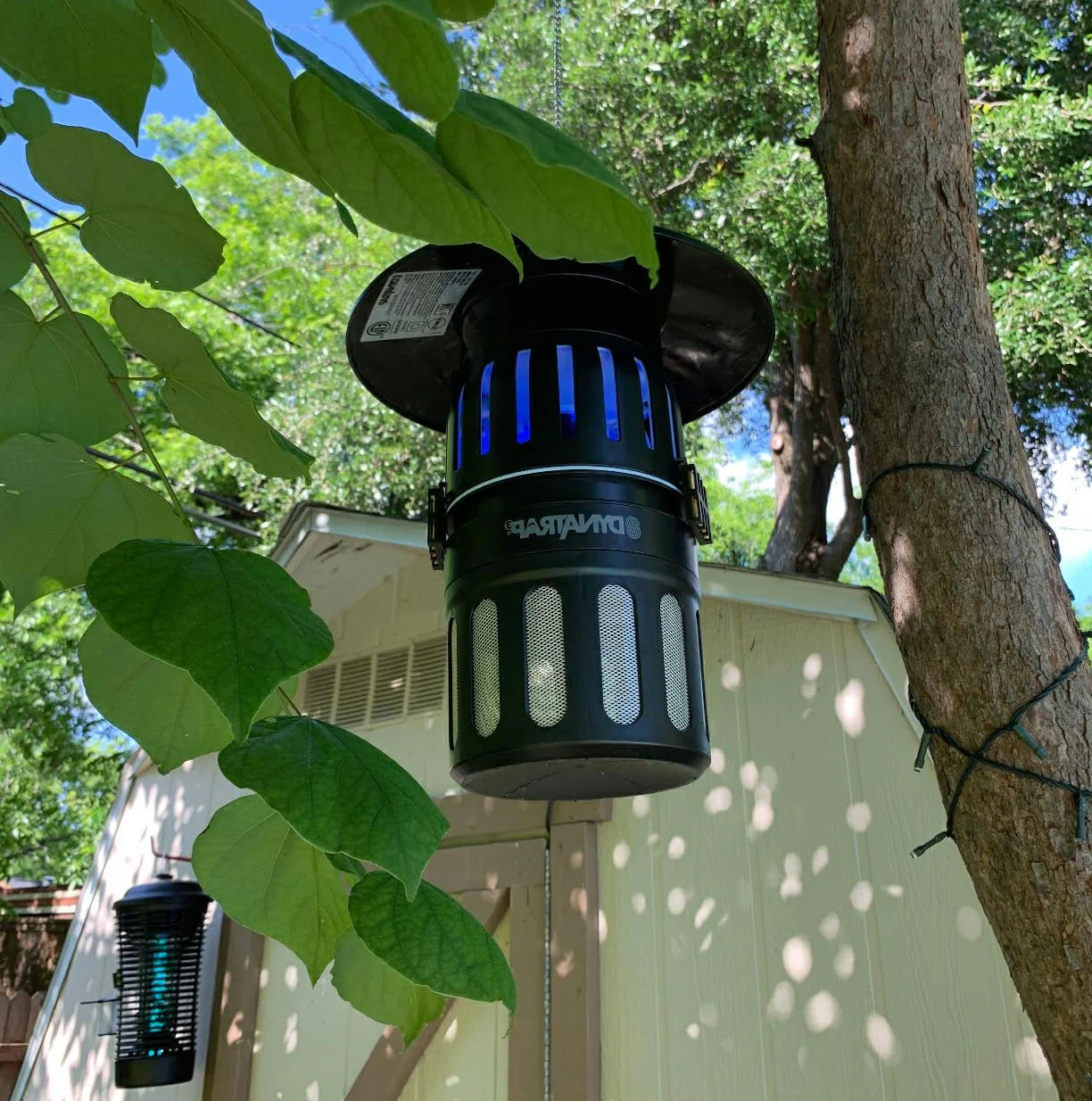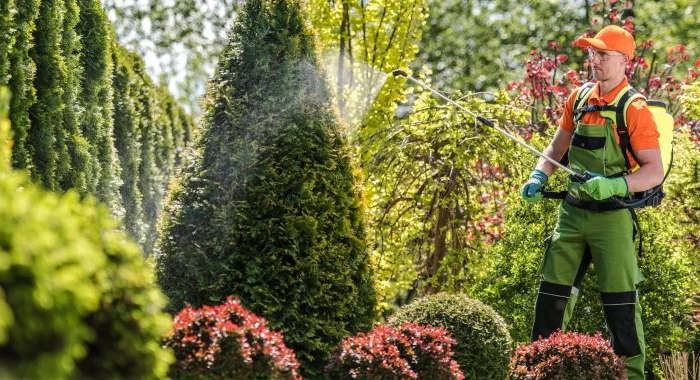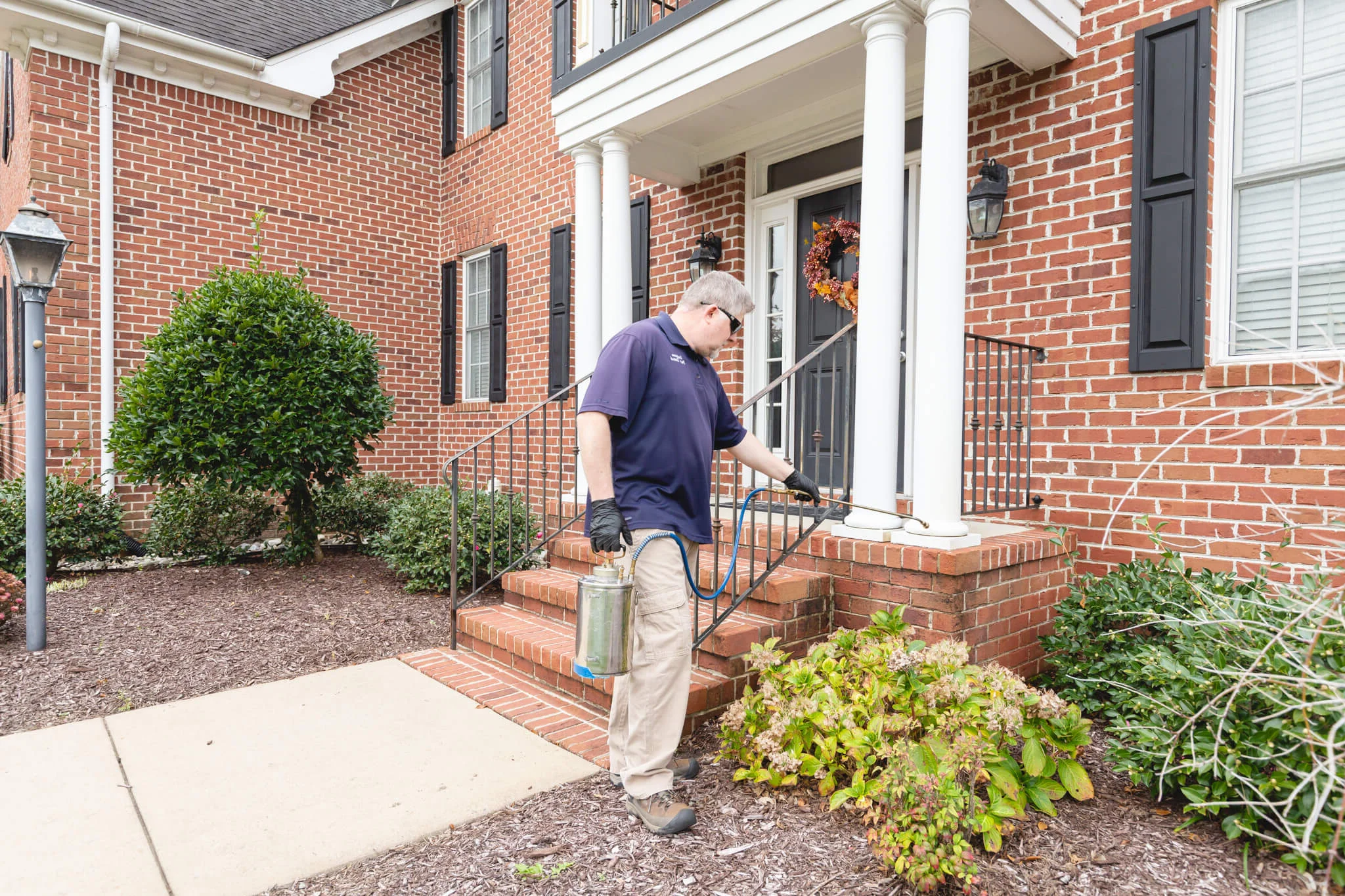From the coastal shores of Long Island Sound to the rolling hills of the northwest region, Connecticut's diverse landscapes create ideal conditions for a wide range of persistent pests. The Constitution State's four distinct seasons, abundant moisture, and mix of urban, suburban, and rural environments support year-round pest activity that challenges homeowners and businesses alike. Effective pest control in Connecticut requires specialized knowledge of these regional conditions, seasonal pest cycles, and the distinctive structures found throughout New England.
Properties across Connecticut face consistent pest pressure that can damage historic homes, compromise health, and disrupt quality of life in communities from Greenwich to Groton. Whether dealing with tick-borne diseases in Fairfield County, termite infestations in Hartford's vintage properties, or wildlife conflicts in rural Litchfield County, local professional exterminators provide essential expertise tailored to Connecticut's specific regional challenges. This guide explores common Connecticut pests, effective control strategies including eco-friendly pest solutions, and why the state's unique combination of climate, architecture, and regulations makes professional knowledge particularly valuable for lasting protection.
Dealing with persistent Connecticut pests? Our New England specialists offer
emergency pest control
24/7 and comprehensive
tick & mosquito protection throughout the state.
Contact us today for prompt assistance!
Pest Control Challenges Specific to Connecticut
Connecticut's unique environment creates distinctive pest control challenges that require specialized approaches. Here's why pest management in the Constitution State demands expert attention:
-
Historic properties and traditional construction Connecticut's abundance of historic homes—many dating back centuries—feature construction methods that create unique pest vulnerabilities including post-and-beam framing, fieldstone foundations, and multiple renovation layers that provide hidden pest entry points and harborage areas.
-
Diverse ecosystems in a compact area Despite its small size, Connecticut encompasses coastal, riverine, forest, and urban ecosystems within short distances, supporting different pest populations that readily move between these zones and creating complex management challenges in transition areas.
-
Dramatic seasonal shifts Connecticut's distinct four-season cycle drives predictable but intense pest behavioral changes throughout the year—from spring awakening to summer breeding peaks, fall invasions seeking winter shelter, and overwintering strategies during cold months.
-
High tick populations and disease concerns The state consistently ranks among the highest in the nation for tick-borne disease cases, with Lyme disease, babesiosis, and other serious conditions creating health risks that demand specialized management approaches around homes and recreational areas.
-
Strict environmental regulations Connecticut maintains stringent environmental protection regulations, particularly regarding wetlands, waterways, and pesticide applications, requiring pest management professionals to navigate complex compliance requirements while providing effective solutions.
Understanding these Connecticut-specific challenges is crucial for effective pest management. Professional pest control services develop customized treatment plans that address these regional factors, providing targeted protection for the state's distinctive environmental and structural conditions.
Common Pests in Connecticut
Connecticut's environment supports a diverse range of pests that impact homes and businesses throughout the year. Here are the most common invaders that plague the Constitution State:
Ticks
Professional tick control treatment being applied to a Connecticut yard
Connecticut faces one of the nation's highest tick populations and corresponding disease risks. Blacklegged (deer) ticks, American dog ticks, and the increasingly common lone star tick thrive in the state's wooded areas, tall grasses, and leaf litter. These parasites can transmit Lyme disease, babesiosis, anaplasmosis, and other serious illnesses that impact thousands of Connecticut residents annually.
Professional tick control combines strategic yard treatments focusing on transition zones between maintained lawns and wooded areas, leaf litter management recommendations, and creation of landscape barriers that reduce tick habitat near living spaces. Many Connecticut homeowners implement comprehensive seasonal protection programs that begin in early spring and continue through fall, particularly in heavily wooded communities where tick pressure remains constant.
Mosquitoes
Mosquito control treatment being applied in a Connecticut yard
Connecticut's abundant waterways, wetlands, and seasonal rainfall create ideal breeding conditions for numerous mosquito species. Beyond the nuisance of itchy bites, these insects can transmit West Nile virus, Eastern equine encephalitis, and other diseases of concern. Coastal areas face additional challenges with salt marsh mosquitoes, while urban and suburban communities contend with container-breeding species that reproduce in small water collections around homes.
Effective mosquito control combines source reduction to eliminate standing water, larvicide applications in water features that cannot be drained, and strategic barrier treatments around properties. Professional services typically provide monthly treatments during Connecticut's mosquito season (May through October) to protect outdoor living spaces and reduce disease risks, with customized approaches for properties near wetlands, ponds, or other natural breeding sites.
Termites
Termite inspection being conducted on a historic Connecticut property
Eastern subterranean termites represent a significant threat to Connecticut homes, particularly in the state's abundant historic properties and older neighborhoods. These wood-destroying insects thrive in the region's moist soil conditions, readily establishing colonies that can damage structural elements and remain active year-round within heated structures, even during cold winters.
Professional termite control in Connecticut often combines monitoring and baiting systems with liquid soil treatments, adapted to each property's specific construction and conditions. Historic homes require particularly careful approaches that protect irreplaceable structural components while respecting architectural integrity. Annual termite inspections are especially important for Connecticut's older properties, as early detection prevents the extensive damage these silent destroyers can cause to New England's traditional wooden structures.
Rodents
Connecticut's cold winters drive mice, rats, and other rodents to seek shelter in homes and businesses, creating seasonal invasion pressure each fall. House mice and Norway rats commonly infest structures throughout the state, while rural and suburban areas face additional challenges with deer mice, white-footed mice, and occasional vole infestations in landscapes.
Comprehensive rodent control begins with thorough exclusion work to seal entry points—particularly important for Connecticut's older homes with their numerous gaps and penetrations. Professional services combine monitoring systems, targeted trapping or baiting programs, and ongoing prevention measures. Particular attention to vulnerabilities in historic structures helps protect these properties from the damage rodents can cause to insulation, wiring, and irreplaceable structural elements.
Carpenter Ants
Professional inspection for carpenter ant damage in a Connecticut home
Carpenter ants thrive in Connecticut's wooded environments and readily invade homes, particularly older structures with moisture issues or wood-to-soil contact. Unlike termites, these insects excavate wood rather than consuming it, creating smooth tunnels and galleries that can damage structural elements over time. Their preference for moist, decaying wood makes them particularly problematic in areas with water intrusion or aging wooden components.
Professional management of carpenter ants involves thorough inspection to locate parent and satellite colonies, identification of moisture issues that attract these pests, and targeted treatments using specialized products that eliminate the entire colony structure. For Connecticut homes, particularly those in wooded settings, regular monitoring helps detect early activity before significant damage occurs, protecting both modern and historic structures from these persistent wood-destroying insects.
Eco-Friendly Pest Control for Connecticut's Natural Beauty
Connecticut's environmental consciousness and abundant natural resources create strong demand for sustainable pest management approaches. Modern eco-friendly pest solutions protect homes and businesses while preserving the state's watersheds, Long Island Sound ecosystem, and diverse wildlife. Professional services implement Integrated Pest Management (IPM) principles that minimize chemical use through careful inspection, precise targeting, and preventative measures.
This sustainable methodology is especially valuable in Connecticut, where many communities maintain strict environmental ordinances and residents prioritize protecting natural resources. Eco-friendly solutions are ideal for families with children, pet owners, organic gardeners, and properties near sensitive areas like wetlands or waterways. Professional exterminators receive specialized training in Connecticut's environmental protection standards, ensuring treatments comply with local regulations while safeguarding the Constitution State's natural beauty.
Environmental Commitment
Connecticut pest control specialists understand the importance of protecting the state's precious watersheds and Long Island Sound, using carefully selected treatments that meet strict environmental standards while effectively managing pest populations.
Below is a comparison of different pest control treatment methods, including green options, highlighting their benefits for Connecticut properties:
| Treatment Method |
Benefits |
Ideal Use in Connecticut |
| Targeted Applications |
Minimizes chemical use through precise application only where needed, reducing environmental impact while addressing specific pest issues.
|
Tick control in property transition zones, carpenter ant management, and treatment of specific pest harborage areas while protecting beneficial insects and watershed quality.
|
| Biological Controls |
Uses natural predators, parasites, or pathogens to reduce pest populations in an environmentally compatible way, protecting Connecticut's ecosystems.
|
Mosquito control in sensitive wetland buffer zones, garden pest management, and specialized applications near water features where traditional products may impact aquatic life.
|
| Physical Exclusion |
Creates barriers to prevent pest entry without chemicals; provides long-term protection with zero environmental impact while addressing Connecticut's seasonal pest invasions.
|
Rodent exclusion for historic homes, preventing fall pest invasions, and creating barriers against ticks and other perimeter pests without chemical dependence.
|
| Habitat Modification |
Addresses conditions that attract pests by altering environmental factors that support pest populations without chemical intervention.
|
Tick habitat reduction through leaf litter management, addressing moisture issues that attract carpenter ants, and landscape adjustments that reduce harborage areas for various pests.
|
| Low-Impact Formulations |
Uses materials with minimal environmental persistence and targeted modes of action that reduce non-target impacts while effectively managing pest issues.
|
Treatments near wetlands, waterways, and sensitive habitats where Connecticut's regulations limit conventional approaches while still requiring effective pest management solutions.
|
Residential & Commercial Pest Control Throughout Connecticut
Residential Pest Protection
Connecticut homes face unique pest pressures influenced by location, architecture, and surrounding environment. Residential pest protection programs are tailored to the specific challenges of different Connecticut properties, from historic colonial homes to modern suburban developments, shoreline cottages to rural farmhouses.
Professional services offer customizable plans that provide protection against Connecticut's most common household pests, with particular emphasis on tick and mosquito management, seasonal invader prevention, and comprehensive termite protection. Treatment schedules adapt to the state's distinct seasons, with increased attention during spring and summer when pest activity peaks. For Connecticut's abundant historic homes, specialized approaches address the unique vulnerabilities of traditional construction while preserving architectural integrity.
Commercial Pest Control
From restaurants in New Haven to manufacturing facilities in Hartford, hospitality venues in Mystic, and retail spaces in Stamford, Connecticut businesses need reliable pest management to protect their reputations and comply with regulations. Commercial pest control programs address the distinctive challenges of Connecticut's business environment, with industry-specific protocols for food service, healthcare, education, hospitality, manufacturing, and retail.
Professional services provide comprehensive documentation—critical for compliance with Connecticut's strict health codes—along with discreet service scheduling and emergency response capabilities. Many of the state's commercial properties occupy historic buildings with inherent pest vulnerabilities that require specialized approaches. For Connecticut's important tourism industry, effective pest management provides invisible protection that enhances visitor experiences while meeting all regulatory requirements.
From residential pest protection plans to customized
commercial pest control solutions, we have you covered throughout Connecticut –
schedule your service now and keep your
property pest-free!
Why Choose Local Experts in Connecticut?
When it comes to protecting your Connecticut property from pests, working with local experts offers distinct advantages. A local pest control company understands the region's specific challenges and truly cares about the community. Here's why choosing local Connecticut specialists makes a difference:
-
Knowledge of regional pest patterns Local technicians understand how Connecticut's microenvironments—from coastal areas to inland valleys—affect pest behavior and treatment needs, allowing for precisely targeted approaches that account for local conditions.
-
Experience with New England architecture Local experts are familiar with Connecticut's distinctive building styles—from colonial and Victorian homes to modern construction—and understand the unique pest vulnerabilities each presents, particularly in historic structures that require specialized treatment methods.
-
Understanding of local regulations Connecticut maintains strict environmental protection regulations that vary by municipality and watershed. Local professionals navigate these requirements daily, ensuring all treatments remain fully compliant while effectively addressing pest issues.
-
Seasonal timing expertise Local specialists know exactly when different seasonal pests become active in specific Connecticut regions, allowing for precisely timed preventative treatments before problems emerge—from spring termite swarms to fall rodent invasions.
-
Community connections Local companies maintain relationships with other Connecticut service providers, offering valuable referrals for related needs like wildlife control, restoration services, or specialized historic property maintenance that may be required alongside pest management.
By choosing local professional exterminators with deep knowledge of Connecticut's specific pest challenges, property owners receive more effective, regionally-appropriate solutions than generic approaches used by those unfamiliar with the Constitution State's unique conditions.
Regional Pest Control Services Throughout Connecticut
Different regions of Connecticut face unique pest challenges based on geography, development patterns, and surrounding ecosystems. Professional pest control specialists understand these regional differences:
Fairfield County
Including: Stamford, Greenwich, Norwalk, Bridgeport, Danbury
This affluent southwestern region faces significant tick pressure and corresponding Lyme disease concerns, particularly in wooded communities with extensive landscaping. Its mix of historic homes and luxury properties requires tailored approaches that protect valuable structures while maintaining aesthetic standards. The county's proximity to New York City also increases exposure to occasional invasive species and urban pest pressures that spread along transportation corridors.
Hartford County & Central Connecticut
Including: Hartford, West Hartford, New Britain, Manchester, Bristol
The state's central region contains its densest urban areas along with suburban communities and rural zones. This diversity creates varied pest challenges including urban rodent populations, termite pressure on the region's abundant historic structures, and seasonal invasions of overwintering pests in fall. The Connecticut River corridor that runs through this region also creates distinct pest patterns in riverfront communities.
New Haven County & Coastal Connecticut
Including: New Haven, Waterbury, Meriden, Milford, Hamden
Coastal areas face unique challenges with salt marsh mosquitoes and moisture-loving pests, while inland communities contend with typical woodland insects and rodents. The region's aging housing stock in urban centers creates significant termite and rodent vulnerabilities, while suburban developments often experience tick and wildlife pressure where they border natural areas.
Eastern Connecticut
Including: New London, Norwich, Groton, Windham, Storrs
This more rural region contains extensive woodlands, agricultural areas, and scattered urban centers. Tick populations thrive in the abundant natural areas, creating significant Lyme disease risk. The region's older farmhouses and rural properties often experience rodent and wildlife conflicts, while coastal communities in New London County face distinctive shoreline pest pressures including sand fleas and salt marsh mosquitoes.
Top Cities for Pest Control in Connecticut
Professional pest control services are available throughout the Constitution State. Below are some of the major Connecticut cities where quality pest management is especially important:
Hartford
Connecticut's capital faces diverse pest challenges across its urban landscape. The city's mix of historic buildings, government facilities, and modern structures creates varied pest habitats. Older neighborhoods contend with established rodent populations and termite issues, particularly in the city's numerous historic properties. The Connecticut River corridor introduces additional mosquito pressure during warm months. Hartford's commercial centers require specialized pest management for restaurants, healthcare facilities, and office buildings, many occupying historic structures with inherent pest vulnerabilities.
Greenwich
This affluent Fairfield County community exemplifies the unique pest challenges faced in southwestern Connecticut. Extensive woodlands and landscaped estates create significant tick pressure and Lyme disease concerns, while the town's position on Long Island Sound introduces coastal pest issues. Greenwich's impressive inventory of historic and luxury homes requires specialized pest management approaches that protect valuable structures while maintaining aesthetic standards. The community's proximity to New York City also increases exposure to occasional invasive species that spread along transportation corridors.
Connecticut Service Coverage Map
Seasonal Pest Guide for Connecticut
Spring (March-May)
- Termite swarms emerge
- Tick activity increases dramatically
- Carpenter ants become active
- Early mosquito breeding begins
Recommendation: Schedule annual termite inspection, implement tick control, and prepare for mosquito season with comprehensive yard treatments.
Summer (June-August)
- Mosquito activity peaks
- Tick populations remain high
- Stinging insects establish colonies
- Ant infestations become more visible
Recommendation: Maintain regular mosquito and tick control service, address stinging insect nests promptly, and continue perimeter protection.
Fall (September-October)
- Rodents begin seeking indoor shelter
- Overwintering pests move toward structures
- Stinging insect colonies reach maximum size
- Last surge of tick activity before winter
Recommendation: Critical timing for rodent exclusion work and preventing overwintering pest invasions before cold weather arrives.
Winter (November-February)
- Rodent activity concentrated indoors
- Occasional warm days activate overwintering pests
- Termites remain active within heated structures
- Preparation time for spring pest emergence
Recommendation: Focus on indoor pest management and structure protection during Connecticut's coldest months.
Connecticut's distinct four-season climate creates predictable but sometimes intense pest cycles throughout the year. Professional pest control services adjust their approach with each season to address these patterns and protect properties during each seasonal transition.
What Our Connecticut Clients Say
"After years of being unable to enjoy our Fairfield backyard due to ticks, their comprehensive treatment program has finally allowed our family to use our outdoor spaces without constant worry."
- Jennifer M., Fairfield
★★★★★
"Their termite protection program saved our historic West Hartford home from what could have been devastating damage. Their inspector found early signs of activity that our previous company had completely missed during routine inspections."
- Robert K., West Hartford
★★★★★
"As a restaurant owner in New Haven, pest control is critical for our reputation. Their commercial service is thorough, discreet, and has kept us consistently in compliance with Connecticut's strict health regulations despite operating in a century-old building."
- Maria L., New Haven
★★★★★
Frequently Asked Questions
How can I protect my family from Connecticut's high tick population?
Protecting your family from Connecticut's abundant tick population requires a multi-faceted approach. First, consider professional tick control treatments for your yard, focusing on property perimeters, wooded edges, and transition zones where ticks concentrate. These treatments typically need to be reapplied every 4-6 weeks during peak season (April through October). Additionally, implement landscape modifications including keeping grass short, removing leaf litter, creating mulch barriers between wooded areas and lawn spaces, and pruning trees to increase sun exposure, as ticks prefer shaded, humid environments. For personal protection, use EPA-approved repellents when outdoors, wear light-colored clothing that makes ticks visible, conduct thorough tick checks after outdoor activities, and shower within two hours of coming indoors. For properties with severe tick pressure, especially in Fairfield and Litchfield counties where Lyme disease rates are highest, comprehensive professional management programs provide the most reliable protection.
How do you safely treat historic Connecticut homes for pests?
Historic homes in Connecticut require specialized pest management approaches that protect irreplaceable structures while respecting architectural integrity. Our approach begins with particularly thorough inspections that account for the unique construction features of period homes—from post-and-beam framing to fieldstone foundations, horsehair plaster, and multiple renovation layers. We identify vulnerable areas while documenting architectural elements that require protection during treatment. For wood-destroying organisms like termites and carpenter ants, we utilize targeted treatment methods that protect structural integrity without compromising historic materials, often employing specialized equipment to access voids and hidden areas. When chemical applications are necessary, we select products and application methods appropriate for sensitive historic materials. For Connecticut's numerous historic properties on the National Register or in historic districts, we ensure all treatments comply with preservation guidelines while still providing effective pest protection.
How often should Connecticut homeowners schedule pest control?
The optimal frequency for pest control in Connecticut depends on several factors including your location, property characteristics, and the specific pests of concern. Most Connecticut homes benefit from quarterly service that aligns with the state's distinct seasonal pest cycles. However, properties with specific challenges often require adjustments to this schedule. Homes in heavily wooded areas with high tick pressure typically need monthly treatments during the April-October tick season. Properties near wetlands or waterways may require more frequent mosquito management during summer months. Historic homes often benefit from more intensive termite and carpenter ant monitoring given their vulnerability to wood-destroying organisms. During your initial inspection, our technicians will evaluate your property's unique situation and recommend a customized schedule that provides protection against Connecticut's predictable seasonal pest pressures while addressing any specific concerns for your home or location.
How do Connecticut's environmental regulations affect pest control options?
Connecticut maintains some of the nation's most comprehensive environmental protection regulations, which significantly impact pest management practices throughout the state. The Connecticut Department of Energy and Environmental Protection (DEEP) establishes strict guidelines regarding pesticide applications near waterways, wetlands, and public spaces. Particularly notable are restrictions on applications within 100 feet of water bodies, additional permit requirements for wetland buffer zones, and specific limitations around schools and daycare facilities. These regulations necessitate specialized approaches in many situations, especially in coastal communities and properties along the state's numerous rivers, streams, and wetlands. Professional pest management companies stay current with these evolving requirements, implementing compliant solutions that protect both structures and sensitive ecosystems. While these regulations may occasionally limit certain treatment options, they ultimately benefit Connecticut residents by promoting safer, more environmentally responsible pest control approaches that preserve the state's natural resources.









